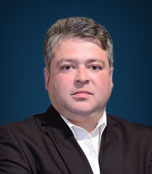Nuclear power is essential for the security of electricity supply in the CESA region. Eight countries (Armenia, Bulgaria, the Czech Republic, Hungary, Romania, Slovakia, Slovenia and Ukraine) have 7% of the global nuclear reactors and generate nuclear power that represents 22% of their energy mix, double the global average, according to EY.
The highest shares are recorded in Slovakia, Ukraine and Hungary, while the lowest, below 20%, is in Romania.
The economics of developing viable nuclear power generation capacity are complex and risky. Typically, a long, difficult and capital-intensive design and construction phase is followed by a long economic life, with low fuel costs, relatively low operating costs and a high capacity factor (70%-75% in Europe and 90% in the US). The success of such a project depends largely on the cost of capital, influenced by investors’ risk assessments, legal frameworks, national energy policies and the political context. EY estimates that the weighted average cost of capital (WACC) for building new nuclear power plants is between 5% and 15%, compared to between 5% and 8% for solar and wind power. Changes in WACC significantly affect electricity costs and the competitiveness of projects.
“The expansion of the Cernavoda power plant with two new 720MWe CANDU reactors will contribute to increasing Romania’s energy security and achieving sustainability goals. However, like other countries in the region, Romania needs to address challenges related to financing, capital costs and the regulatory framework to ensure the success of these projects. Strong government commitment and risk mitigation mechanisms will be essential to attract the necessary investment in the future of nuclear energy in Romania,” says Mihai Drăghici, Partner, Consulting, EY Romania.
Almost all nuclear assets in operation in this region are of the Soviet-designed pressurized water reactor type (Vodo-Vodyanoi Energetichesky Reactor – VVER). Only three reactors in the CESA region use alternative technologies.
In Romania, two units use reactors based on the Canadian CANDU 6 technology, with pressurized heavy water. In Slovenia, the unit jointly owned with Croatia uses an American PWR reactor with a dual-loop primary cooling system.
The average age of active nuclear facilities in the CESA region is slightly above the global average (35 years, compared to 32.2 years), with the oldest reactors located in Armenia and Slovenia.
The most common nuclear power plants in operation are those using the older Generation II nuclear reactors. Advanced versions of these (Generation III), which offer improved efficiency and higher safety features, are in operation in Bulgaria, the Czech Republic and Ukraine, based on the VVER-1000 technology.
At the 28th UN Climate Change Conference, held in Dubai in 2023, a Declaration was launched on tripling nuclear power capacity from around 390 GW in 2023 to almost 1,200 GW by 2050. The CESA region is planning its own expansion of nuclear capacity. Countries that already have nuclear assets are exploring their addition and are considered first-in-a-while markets (countries that invest for the first time after a longer period of time), while “newcomers”, such as Turkey, Poland, Kazakhstan and Uzbekistan, plan to launch their first nuclear power plants, equipped with both large-sized reactors and Small Modular Reactors (SMRs).

